What are the differences between CWDM/DWDM wavelength division multiplexing devices? Which one is better to use?
Dense wavelength division multiplexing (DWDM) has made great progress in reducing costs, and is therefore becoming more and more popular in the market. However, coarse wavelength division multiplexing (CWDM) devices still have a significant price advantage in scenarios with connection rates below 10G and short-distance transmission. In the construction of low-data-rate networks, it is still the most feasible device currently.
Mixed Transmission of CWDM/DWDM Wavelength Division Multiplexing Devices
CWDM wavelength division multiplexing devices and DWDM wavelength division multiplexing devices have their own advantages in OTN networks. Due to the advantage of CWDM wavelength division multiplexing devices being able to use relatively low-cost uncooled distributed feedback lasers and inexpensive passive filters, CWDM wavelength division multiplexing device systems are currently widely used in DWDM wavelength division multiplexing device systems. Although using CWDM technology in DWDM systems allows the use of more cost-effective optical modules, the large channel spacing of CWDM limits the number of usable wavelengths in the system, which in turn limits the transmission capacity of the system. To some extent, it still cannot keep up with pure DWDM wavelength division multiplexing devices.
From the above analysis, we can see that in the future, CWDM wavelength division multiplexing devices and DWDM wavelength division multiplexing devices will complement each other rather than replace each other.
Case Analysis of Building CWDM/DWDM Wavelength Division Multiplexing Device Networks.
User Requirements
In metropolitan area network construction (especially long-distance OTN optical transmission networks), wavelength division multiplexing devices are particularly important. DWDM devices have long-distance and high-bandwidth transmission capabilities; CWDM devices have relatively low costs. So how can we choose suitable wavelength division multiplexing devices to build a cost-effective optical transmission system? What are the differences between CWDM and DWDM wavelength division multiplexing devices?
Currently, an effective method to solve the continuous increase in information transmission bandwidth is to use CWDM and DWDM wavelength division multiplexing devices, but they differ in many aspects.
(1) Channel Spacing of CWDM and DWDM Devices
Channel spacing is defined as the difference between the nominal carrier frequencies of two adjacent optical channels, generally used to prevent channel interference. CWDM devices have a wider spacing than DWDM devices, capable of transmitting 18 wavelengths in the 1271nm to 1611nm optical grid with a 20nm channel spacing. DWDM devices can transmit 40, 80 or 160 wavelengths with a channel spacing of 0.8nm.
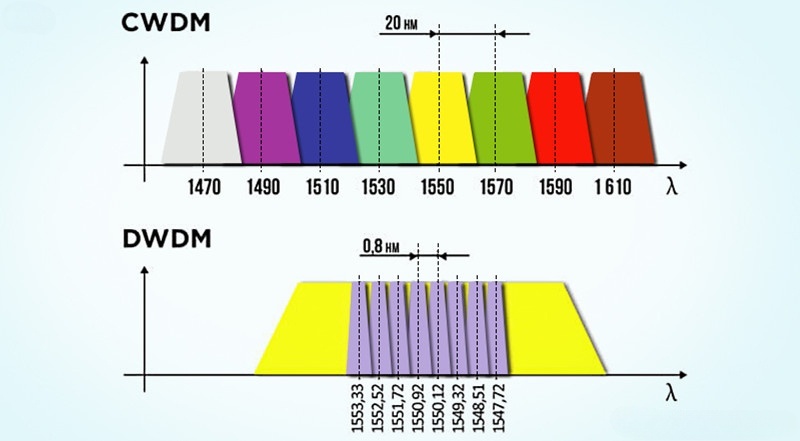
(2) Transmission Distance of CWDM and DWDM Devices
Since the wavelengths in DWDM are highly integrated during fiber transmission, DWDM devices can transmit longer distances than CWDM devices. CWDM devices currently cannot achieve unlimited transmission distance, with a maximum of only 160km, while the transmission distance of DWDM devices far exceeds that of CWDM devices.
(3) Modulation Lasers of CWDM and DWDM Devices
The CWDM system has lower technical requirements for lasers, generally using uncooled lasers. The DWDM system requires cooled lasers, which use temperature control to ensure better performance, higher safety, and longer lifespan, but consume more energy than uncooled lasers used in CWDM devices.
(4) Cost of CWDM and DWDM Devices
Since the temperature distribution is uneven over a wide wavelength range in the DWDM system, using cooling laser technology to adjust the temperature increases the operating cost. Additionally, DWDM systems are usually 4-5 times more expensive than CWDM systems. However, as DWDM becomes more prevalent, DWDM optical module prices are 20%-25% lower than CWDM optical module prices.
Which is Better to Use: CWDM or DWDM Devices?
Usage of CWDM/DWDM Devices
As people's bandwidth requirements continue to increase, DWDM has made great progress in reducing costs and is becoming more and more popular in the market. However, CWDM devices still have a significant price advantage in scenarios with connection rates below 10G and short-distance transmission. In the construction of low-data-rate networks, it is still the most feasible device currently.
Mixed Transmission of CWDM/DWDM Devices
CWDM and DWDM devices have their own advantages in OTN networks. Since the advantage of CWDM devices is the ability to use relatively low-cost uncooled distributed feedback lasers and inexpensive passive filters, CWDM device systems are currently widely used in DWDM device systems. Although using CWDM technology in DWDM systems allows the use of more cost-effective optical modules, the large channel spacing of CWDM limits the number of usable wavelengths in the system, which in turn limits the transmission capacity of the system. To some extent, it still cannot keep up with pure DWDM devices.
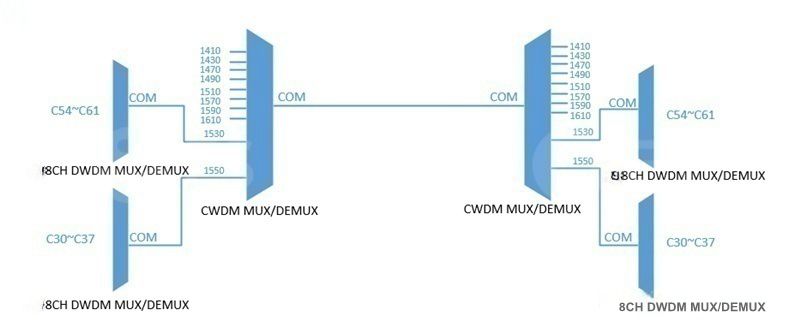
From the above analysis, we can see that in the future, CWDM and DWDM devices will complement each other rather than replace each other.
DWDM (Dense Wavelength Division Multiplexing) can combine and transmit different wavelength signals simultaneously over the same optical fiber. For example, if the capacity of a single fiber is 2.5 Gb/s, DWDM can multiplex 8 optical carriers (OCs) onto a single fiber, increasing the fiber capacity from 2.5 Gb/s to 20 Gb/s. Common configurations are 4, 8, 16, 32, and 40 channels. Currently, due to DWDM, a single fiber can transmit data at speeds up to 400 Gb/s.
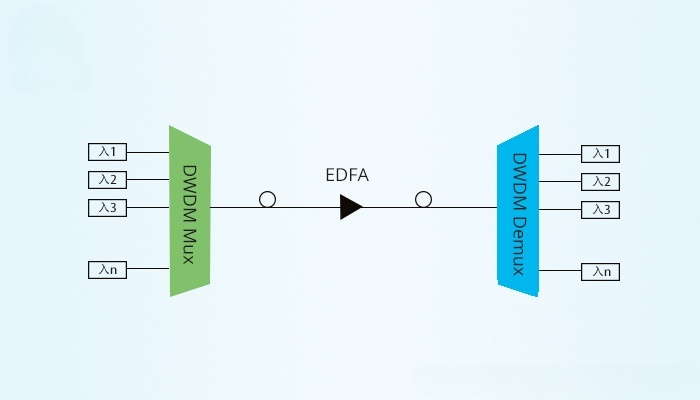
The main difference between CWDM and DWDM is the wavelength spacing, which determines the number of usable wavelengths or channels. This is the difference between "Coarse" and "Dense". Each CWDM channel occupies 20nm of space, while DWDM uses spacing of 50, 100, or 200 GHz (approximately 0.4, 0.8, or 1.6nm), allowing more wavelengths to be multiplexed onto the same fiber. Current DWDM systems can provide 16/20 wave or 32/40 wave single-fiber transmission capacity, with a maximum of up to 160 waves, offering flexible expansion capability.
Long-Distance Transmission
Compared to CWDM, DWDM with its denser wavelength spacing can carry 8 to 160 wavelengths on a single fiber, making it more suitable for long-distance transmission. With the help of Erbium-doped fiber amplifiers (EDFAs), DWDM systems can operate over thousands of kilometers.
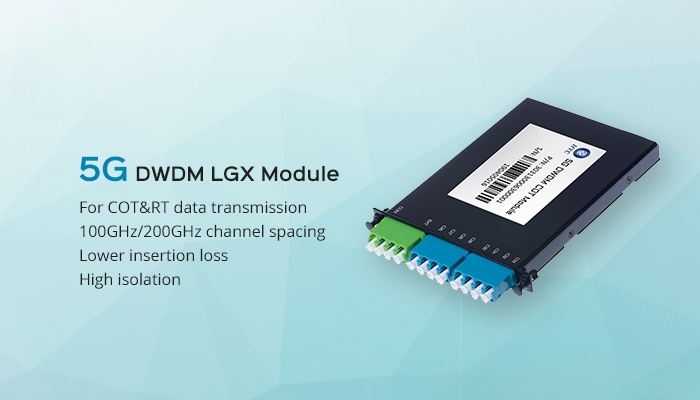
Compared to 4G, 5G requires higher-speed optical modules, larger-capacity optical transmission systems, more flexible networking, and more efficient optical layer scheduling. The application of DWDM, which can carry multiple wavelengths (channels) on a single fiber, has become the main means of expanding the capacity of current fiber optic communication networks. Since each wavelength channel in a DWDM system transparently transmits data without processing the channel data, expansion only requires increasing the number of multiplexed wavelength paths, which is convenient and easy to implement. This allows operators to fully utilize their existing network wiring and achieve smooth upgrades and capacity expansion without major changes or replacements to the existing network.SOPO provides a series of WDM and DWDM products for 5G networks, as a national-level high-tech enterprise focused on the research, development, manufacturing, sales, and services of passive optical communication components.
Fiber optic technology has transformed high-speed data transmission and communication networks. At the core of these networks lie fiber optic patch cords, which serve as the vital links connecting various network elements.
A fiber optic patch cord is a cable equipped with fiber optic connectors at both ends, facilitating the connection of fiber optic network equipment such as routers, switches, and servers.
An array of fiber optic patch cords is available to accommodate diverse applications and environments. Among the most prevalent types are simplex, duplex, and multiport patch cords. Simplex patch cords feature one fiber and are utilized
in one-way data transmission, whereas duplex patch cords incorporate two fibers for bidirectional data transmission. Multiport patch cords, housing multiple fibers, enable the interconnection of several network elements simultaneously.
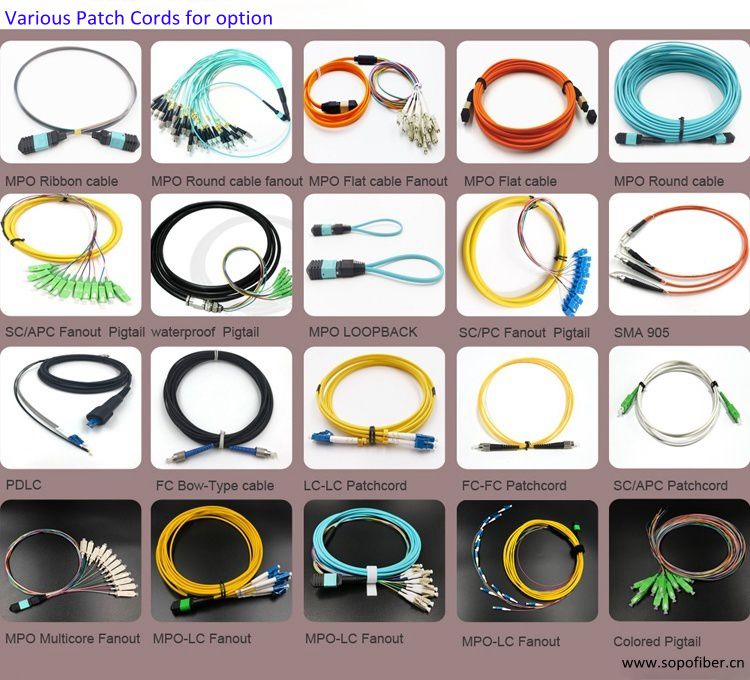
Furthermore, fiber optic patch cords vary in terms of fiber type and cable construction. Fiber options encompass single-mode, multimode, and specialized fibers like bend-optimized fibers. Cable designs may include tight-buffered,
distribution style, or breakout style configurations, tailored to specific application requirements. Notable fiber optic connectors terminating the patch cord ends include popular variants such as LC, SC, ST, FC, MT-RJ, and MPO connectors.
China has emerged as a pivotal manufacturing hub for fiber optic patch cords and associated components. Manufacturers based in China offer top-notch patch cords at highly competitive prices. Leveraging cutting-edge cable and connector technologies,
these Chinese manufacturers produce a comprehensive range of fiber optic patch cords, customized to meet diverse networking needs. Whether it's a basic LC to SC duplex patch cord or an MPO to LC fanout patch cord for 40G/100G networks, China-based
fiber optic patch cord manufacturers can tailor solutions accordingly.
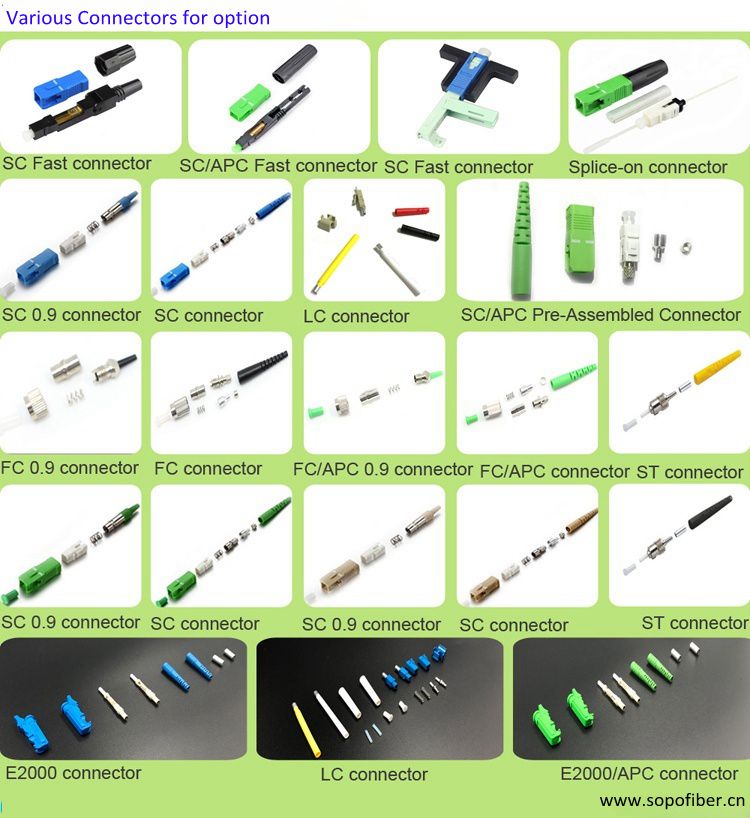
Fiber optic patch cord suppliers in China provide an extensive portfolio encompassing simplex, duplex, and multi-fiber patch cords, coupled with a spectrum of cable and connector options. Their streamlined manufacturing processes
enable the production of high volumes at minimal costs, translating into affordable pricing for customers. Leading fiber optic patch cord suppliers in China offer OEM/ODM services, allowing for customized cable materials, connectors,
lengths, labeling, and packaging to align with unique customer specifications.
Conclusion
Fiber optic patch cords serve as indispensable interconnect components in fiber optic communication networks, available in diverse configurations to suit varied applications. China-based manufacturers have emerged as prominent suppliers,
delivering high-quality, cost-effective fiber optic patch cords to networks worldwide. For all fiber optic connectivity requirements, consider partnering with these reputable manufacturers based in China.
FAQs
Q1. What is a fiber optic patch cord?
A fiber optic patch cord is a short cable featuring connectors at both ends, facilitating the connection between two fiber optic devices, enabling signal transmission between them. Patch cords come in various fiber types and connector
configurations to suit different networking needs.
Q2. What are the common types of fiber optic patch cords?
The three most common types of fiber optic patch cords are simplex, duplex, and multiport patch cords, each tailored for specific communication requirements.
Q3. What are the options for fiber and cable types in patch cords?
Patch cords can be crafted from single-mode fiber, multimode fiber, or bend-optimized multimode fiber, with varying cable designs such as tight-buffered, distribution style, or breakout style, catering to different deployment scenarios.
Q4. What are popular fiber optic connectors used in patch cords?
Popular fiber optic connectors found on patch cords include LC, SC, ST, FC, MPO, and MT-RJ connectors, each offering distinct advantages for different applications.
Q5. Why are China-based suppliers a good choice for fiber optic patch cords?
China-based suppliers offer competitive pricing, high-quality products, and customization options, leveraging the country's robust manufacturing capabilities and extensive experience in the telecommunications industry.
In our increasingly interconnected world, the significance of efficient communication technology cannot be overstated. As businesses, individuals, and societies rely on seamless data transmission, the evolution of communication methods has played a pivotal role in shaping the way we interact and exchange information. One revolutionary technology that has transformed the landscape of data transmission is Optical Fiber Communications.
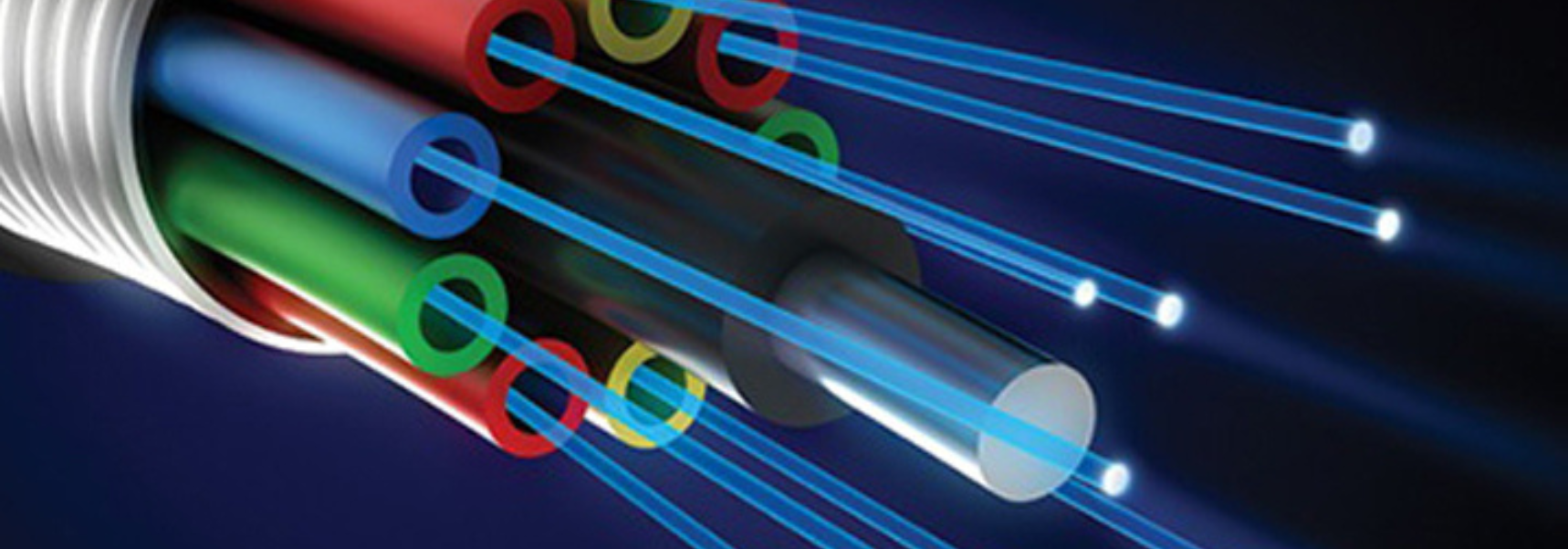
Advantages of Optical Fiber Communications

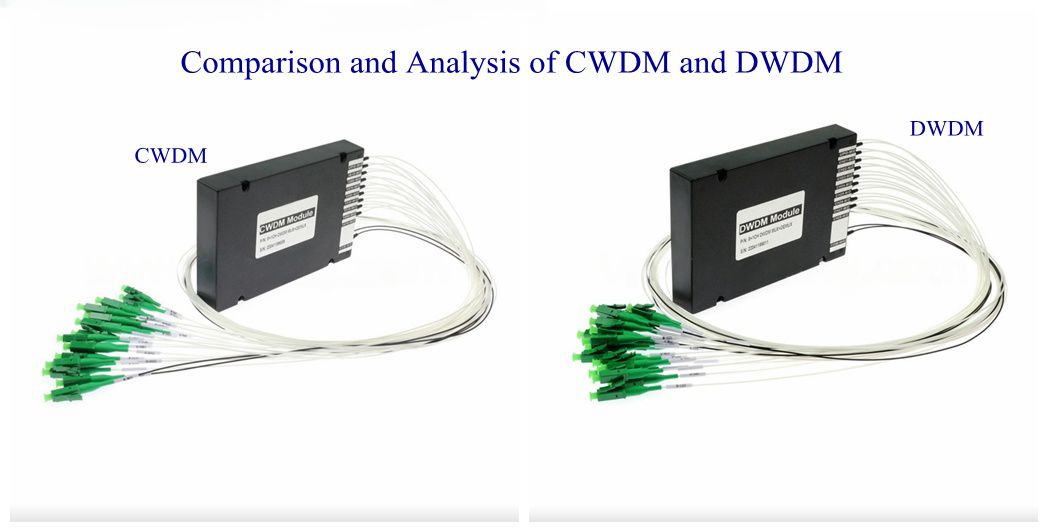
CWDM technology is capable of transmitting up to 18 channels over a single fiber optic cable. The wavelengths used in CWDM are spaced 20nm apart, making it possible to use low-cost lasers and receivers. This reduces the cost of implementation, making it an ideal choice for short-distance transmission, such as within a campus or a building.
On the other hand, DWDM technology is capable of transmitting up to 96 channels over a single fiber optic cable. The wavelengths used in DWDM are spaced only 0.4nm apart, allowing for a larger number of channels to be transmitted over long distances. This makes DWDM an ideal choice for long-haul transmission, such as between cities or even countries. However, due to the use of high-cost lasers and receivers, DWDM is more expensive to implement than CWDM.
In terms of performance, DWDM is superior to CWDM as it offers a higher bandwidth capacity and can transmit signals over longer distances. However, CWDM still has its advantages, especially when it comes to cost-effectiveness.
In a multi-view scenario, where multiple signals are being transmitted between different locations, both CWDM and DWDM can be used together to achieve optimal performance. With the help of multiplexers and demultiplexers, it is possible to combine signals from multiple CWDM and DWDM systems onto a single fiber optic cable. This allows for maximum utilization of the fiber optic network without compromising on performance or cost.
In conclusion, both CWDM and DWDM have their own unique advantages and disadvantages. The choice between the two ultimately depends on the specific requirements of the network. However, in a multi-view scenario, the combination of both CWDM and DWDM can provide optimal performance and cost-effectiveness.
FAQs
Q: What is the difference between CWDM and DWDM?
A: CWDM can transmit up to 18 channels over a single fiber optic cable, while DWDM can transmit up to 96 channels. CWDM is more cost-effective for short distances, while DWDM is more suitable for long-haul transmission.
Q: Which technology is superior, CWDM or DWDM?
A: DWDM is superior to CWDM in terms of bandwidth capacity and distance transmission. However, CWDM is more cost-effective.
Q: Can CWDM and DWDM be used together?
A: Yes, with the help of multiplexers and demultiplexers, it is possible to combine signals from multiple CWDM and DWDM systems onto a single fiber optic cable.
Q: What is the maximum number of channels that can be transmitted over a single fiber optic cable using CWDM?
A: CWDM can transmit up to 18 channels over a single fiber optic cable.
Q: What is the maximum number of channels that can be transmitted over a single fiber optic cable using DWDM?
A: DWDM can transmit up to 96 channels over a single fiber optic cable.
Key words: CWDM, DWDM, optical networking, fiber optic cable, multiplexers, demultiplexers, bandwidth capacity, cost-effectiveness, long-haul transmission, short-distance transmission.
In the realm of fiber optics, MPO connectors stand out as vital components facilitating high-speed data transmission in modern networks. But what exactly is MPO, and why is it so crucial in today's technological landscape?
MPO, which stands for "Multi-Fiber Push-On/Pull-Off," represents a type of optical connector specifically designed to accommodate multiple fibers within a single connector. Unlike traditional connectors that handle one fiber at a time, MPO connectors can house anywhere from 8 to 72 fibers within a single interface, greatly enhancing the efficiency and density of fiber optic connections.
At its core, the MPO connector consists of a rectangular plastic housing that holds precision alignment ferrules, each containing multiple fiber optic channels. These channels, or fibers, are precisely aligned within the ferrule to ensure optimal signal transmission. The connector is equipped with a push-pull mechanism, allowing for easy insertion and removal from compatible interfaces.
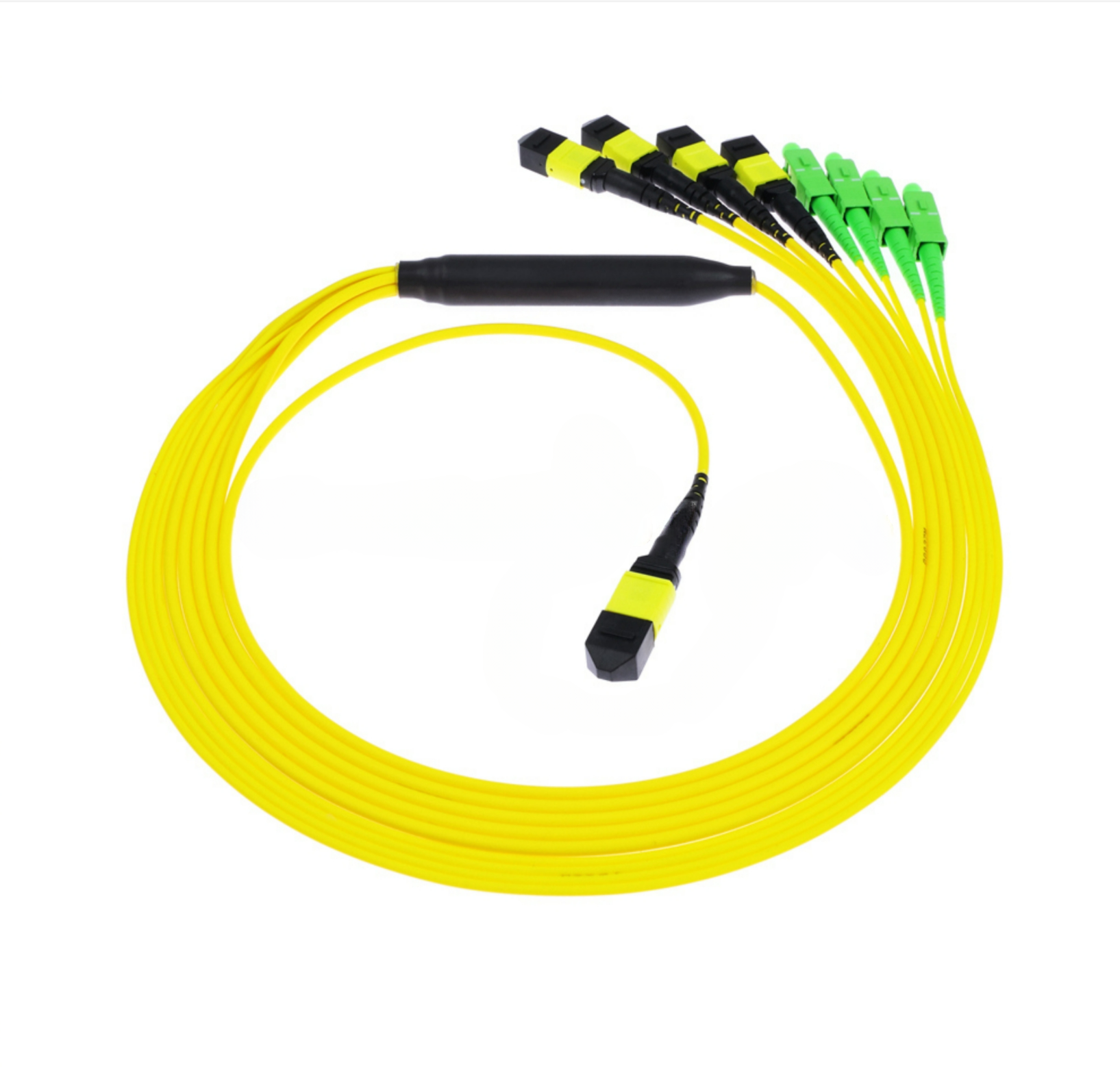
One of the key advantages of MPO connectors lies in their ability to streamline fiber optic connectivity in high-density environments. By consolidating multiple fibers into a single connector, MPO technology significantly reduces the amount of physical space required for cabling, making it ideal for applications where space is limited, such as data centers and telecommunications facilities.
Moreover, MPO connectors support various configurations, including simplex, duplex, and multi-fiber configurations, providing flexibility to meet diverse connectivity needs. This versatility makes MPO connectors suitable for a wide range of applications, from high-speed data transmission to optical networking and beyond.
Another notable feature of MPO connectors is their compatibility with high-speed transmission standards, such as 40 Gigabit Ethernet (GbE), 100 GbE, and beyond. With the ever-increasing demand for faster data speeds, MPO connectors play a crucial role in enabling next-generation network infrastructure to meet the demands of modern digital communication.
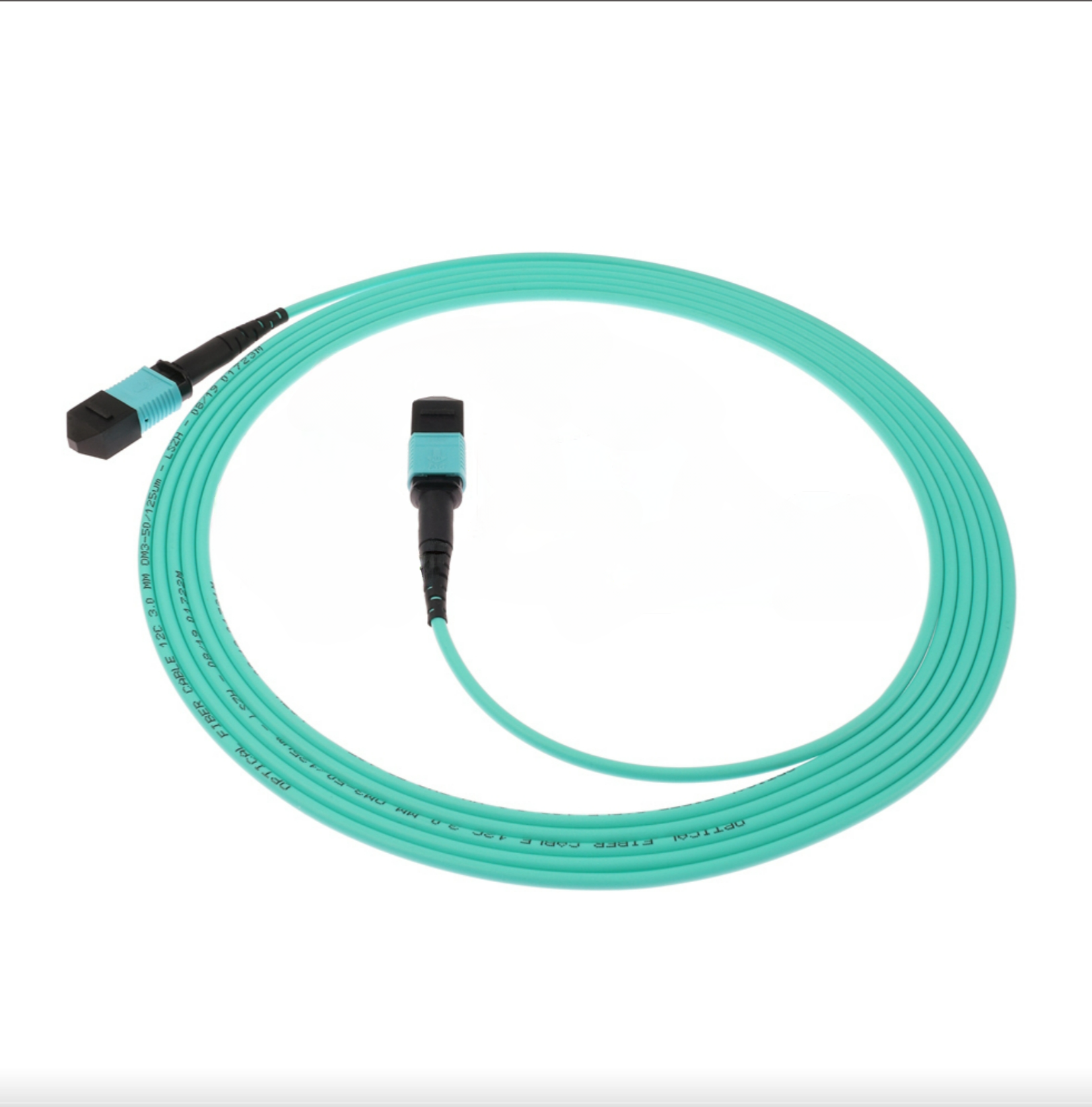
Furthermore, MPO connectors support rapid deployment and scalability, allowing for quick and easy installation and expansion of fiber optic networks. This scalability is particularly advantageous in dynamic environments where network requirements may change frequently.
In conclusion, MPO connectors represent a significant advancement in fiber optic connectivity, offering enhanced performance, density, and flexibility compared to traditional connectors. With their ability to accommodate multiple fibers within a single interface, MPO connectors are poised to play a pivotal role in shaping the future of high-speed data transmission and optical networking.